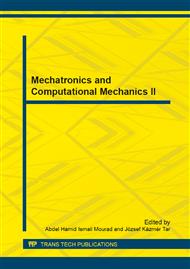p.301
p.306
p.311
p.315
p.319
p.326
p.332
p.339
p.343
Risk Evaluation in Marine Traffic Systems Based on Fuzzy Catastrophe Theory
Abstract:
The main purpose of MArine Traffic Safety System (MATSS) study, based on catastrophe theory, is to ensure the safety of marine traffic and reveal the essence of traffic risks, and so as to create an effective risk prediction and control mechanism. In this paper, cusp catastrophe was modeled and evolutionary path of MATSS was described. Hence, Fuzzy Catastrophe Theory was concluded. This theory combines Fuzzy Math with Catastrophe Theory and is derived from analysis of uncertainties of marine traffic, including dynamics, irreversibility and mutability. The adverse impacts of system potential function and uncertainties of outside controlling factors were minimized via developing such a theory. The marine traffic risk model was created taking perspectives of various observers into consideration accordingly. As a result, Fuzzy Catastrophe Evaluation Method was presented, which is beneficial to the system safety state evaluation and decision. In the end of the paper, the objectivity and rationality of the method was validated by MATLAB, which has broad application in marine risk prediction and control.
Info:
Periodical:
Pages:
319-325
Citation:
Online since:
February 2014
Authors:
Price:
Сopyright:
© 2014 Trans Tech Publications Ltd. All Rights Reserved
Share:
Citation:


